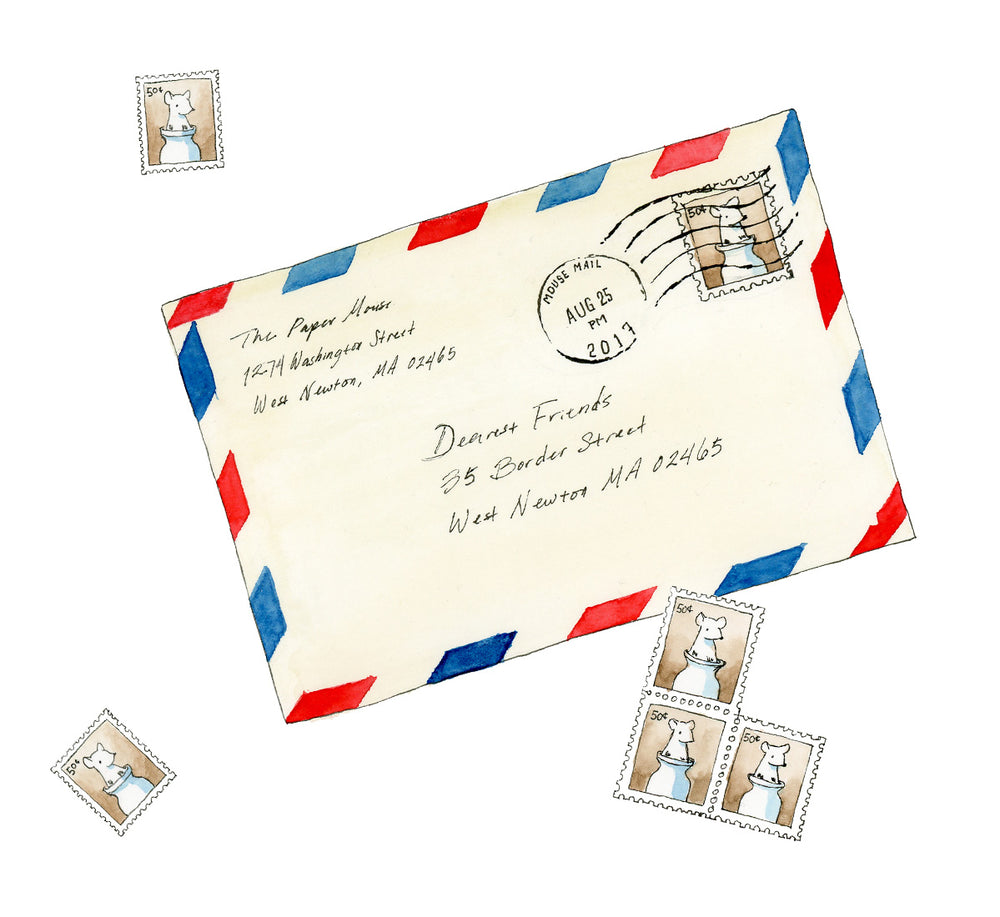Choosing a Fountain Pen Nib Size
When you’re new to the world of fountain pens, the option to choose a nib size can be a little unfamiliar. You may be used to using rollerball or ballpoint pens that write with a thinner or thicker line, but most of the time these pens don’t come with different tip sizes for you to choose from. With fountain pens, however, the nib—or tip—of the pen is often interchangeable, and you’ll have a variety of options, from nibs that write with a very fine and narrow line to nibs that write with a bold, wide line.
We often get questions from customers trying out fountain pens for the first time about how to choose a nib size. Below, we go over some of the basics of fountain pen nibs and how they can vary.

Nibs 101
The nib is the writing tip of a fountain pen. It’s a thin, curved piece of metal with a point at the end. A component called the feed (usually made of plastic) sits under the nib and draws ink from inside the pen, feeding it to the nib. Both the nib and the feed have a slit down the middle to allow ink to flow using capillary action. Fountain pens use water-based inks that flow smoothly through the feed mechanism and the nib.
When you’re choosing a nib size, the very tip of the nib is the part in question. The tip can range from very small and pointy, producing a very thin line, to very broad and flat, allowing you to write with calligraphic strokes.
Common Nib Sizes
Nib sizes vary among pen brands, but it’s typical for pens to come in a number of popular sizes: extra-fine, fine, medium, broad, and stub (or italic). The broader the tip of the nib, the wider the line will be.
However, there’s no industry-wide standard for each of these sizes, so the actual width of the tip is often different between each pen company or nib manufacturer. European brands tend to run slightly wider, while Asian brands tend to make slightly finer nibs—so a “fine” pen from a Japanese company may sometimes be comparable to an “extra-fine” pen from a German pen maker.

Why One or the Other?
The most obvious difference between fine and broad nibs is the size of the line they produce. A small nib size will write a finer line, letting you form smaller letters and details. A large nib size will write larger, bolder letters.
Choosing a narrower or wider nib also makes other subtle differences in the way a pen writes. Because of their smaller size, finer nibs tend to feel a little scratchier when you write with them, offering more resistance or “feedback” on the paper, while broader nibs tend to feel smoother, gliding over the paper without much drag. Some people enjoy feeling a bit of feedback when they write, while others enjoy the silkiness of a wider nib.
There's also a difference in the way the ink appears on the page. Because broader nibs write with a wider line, they lay down more ink, which means they tend to show off ink colors and special properties (like shimmering or shading) a little better than finer nibs. On the other hand, because finer nibs allow less ink through, the ink is less likely to smear, spread, or bleed through the page, and more likely to dry quickly. (Just note that the individual properties of different inks and papers can also affect the way a pen writes, so you may get different effects when writing with the same pen.)

Specialty Nibs
There’s a lot of subtle variety in the world of fountain pen nibs once you start digging in. Aside from the popular sizes mentioned above, you may find pens with different sizes of italic nibs or with flexible nibs for special calligraphy effects, as well as nibs that are ground to slightly different shapes to produce a variety of writing effects.
One brand we carry with nibs outside the standard range of popular sizes is Sailor. They produce the usual nib sizes from extra-fine to broad, but they also have an additional medium-fine size in their lineup, as well as two specialty nibs: the music nib and the zoom nib. Their music nib is similar to a stub nib, with special angles that let you write in big block letters with interesting variations and show off ink beautifully. Their zoom nib has a triangular tip that lets you write in several different line widths by varying the angle at which you hold the pen.
 Sailor Zoom nib
|
 Zoom nib side view
|
 Sailor Music nib
|
 Music nib side view
|
So How Should You Choose?
Choosing a nib size is very much a matter of personal preference. If you have small handwriting or like to write in notebooks with narrower rulings, you may prefer a finer nib. A lot of journalers and artists enjoy using extra-fine or fine nibs for drawing and writing because they allow for finer details.
Broad and stub/italic nibs are good for bold writing. If you have larger handwriting or want to use your pen for bolder projects like making cards, writing headers, and showcasing ink colors, a large bold nib is perfect. Stub/italic nibs are also great for calligraphy and have the advantage of making your handwriting look extra fancy!
Medium nibs are a nice middle ground, a comfortable size for everyday writing that still shows off ink colors nicely.
If you aren’t sure where to start, a fine nib is usually a safe bet, closest to what you may be familiar with in a ballpoint or rollerball pen (though the size can vary from pen to pen). Medium is a nice place to start if you want to try something a little bolder and if you’re excited about using different ink colors.
And, of course, there’s no substitute for trying out a pen in person! If you have an opportunity to visit the shop to play with our testers, or to try a friend’s fountain pen, you can begin to get a feel for your personal preferences.




You bring the wonder of discovery to writing. The Sailor pen is glorious but the Music nib is now in my future.
Thank you! Now I want to try the Sailor Zoom nib!
Thank you for this very helpful explanation!
Leave a comment